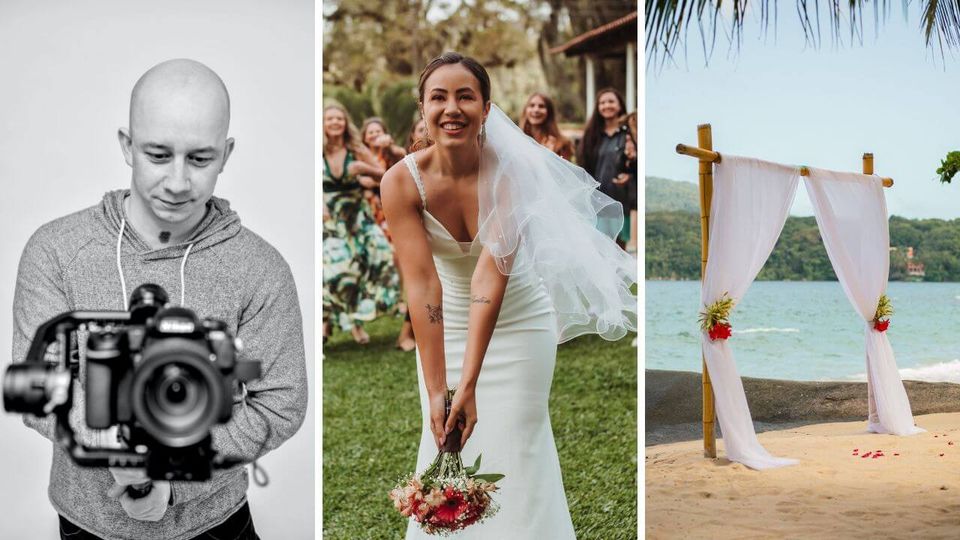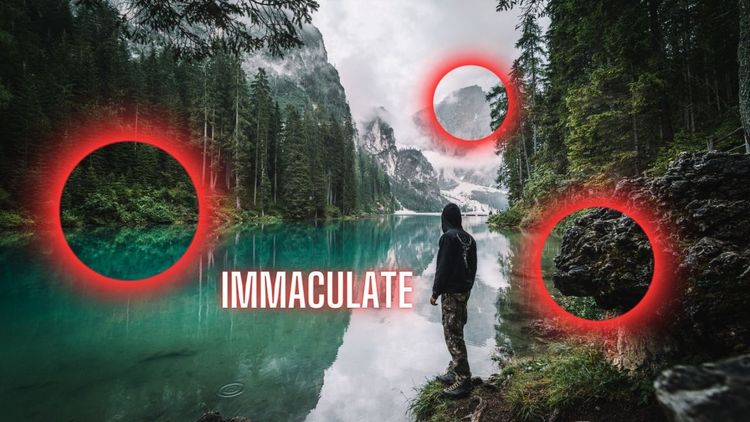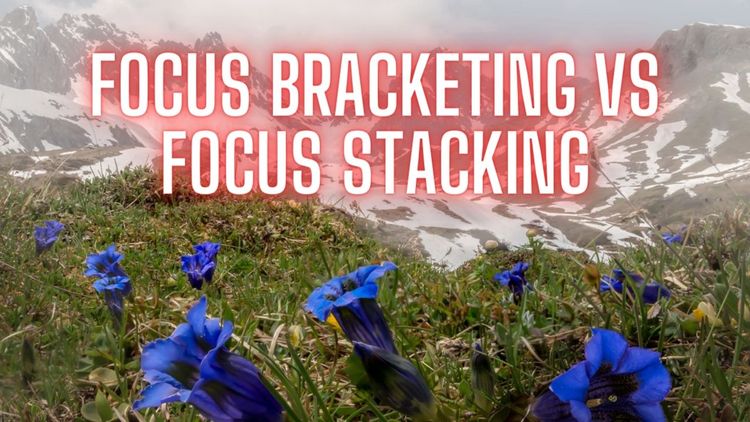How to Use a Gimbal for Cinematic Wedding Videography: 5 Must-Know Tips

Wedding videography is an art that requires technical skills, creativity, and the right equipment to produce stunning and cinematic wedding videos.
One of the essential tools for capturing smooth and dynamic footage is a gimbal.
In this article, we will guide you on how to use a gimbal at a wedding to capture breathtaking cinematic footage.
We will share tips, techniques, and essential gimbal moves that will help you elevate your wedding videography pro game.
Introduction to Using a Gimbal for Wedding Videography
Wedding videography has evolved over the years, and cinematic wedding videos have become the norm.
To create a cinematic wedding video, you need to capture footage that tells a story, captures emotions, and makes the viewer feel like they are part of the wedding day.
A gimbal is a tool that helps you achieve smooth, stable, and dynamic footage that adds to the cinematic feel of a wedding video.
A gimbal is a handheld device that stabilizes your camera and allows you to move it smoothly in any direction.
What is a Gimbal?
A gimbal is a device used to stabilize cameras, smartphones, and other devices. It consists of three-axis motors that keep the camera steady and balanced while moving.
Gimbals come in various shapes and sizes, but the most common type used for wedding videography is the hand held gimbal.
Handheld gimbals are really compact, easy to use, and allow you to move around freely while shooting.

Why Use a Gimbal for Wedding Videography?
Using a gimbal for wedding videography has several benefits. Firstly, a gimbal stabilizes your camera and eliminates shaky footage, which is a common problem when shooting handheld.
Secondly, a gimbal allows you to move your camera smoothly in any direction, creating dynamic and cinematic footage.
Thirdly, a gimbal helps you capture footage from unique angles, such as low-angle or high-angle shots, which adds depth and dimension to your wedding video.
How to Use a Gimbal for Wedding Videography
Using a gimbal for wedding videography may seem daunting at first, but with practice and patience, it becomes easier.
Here are some tips to help you use a gimbal as a wedding videographer:
Invest in the Right Gimbal
Investing in the right gimbal is crucial to capture smooth and stable footage. The DJI RS2 and Ronin S are popular choices for wedding videographers.
They are reliable, easy to use, and offer a range of features that help you capture stunning footage. But DJI's latest version has, even more, to offer for a price.
Know Your Gimbal
Before using your gimbal at a wedding, it's essential to understand its features and settings.
Read the manual, watch tutorial videos, and practice using your gimbal before the wedding day.
Knowing your gimbal will help you use it effectively and efficiently.
Use a Tripod When Necessary
While a gimbal is great for capturing dynamic footage, it's not suitable for all situations.
When shooting speeches or ceremonies, it's best to use a tripod to capture stable footage.
A tripod will eliminate any unwanted movement and ensure that your footage is sharp and steady.
Capture Footage in Slow Motion
Slow-motion footage adds a cinematic feel to your wedding video. Most gimbals offer slow-motion settings that allow you to capture footage at different frame rates.
Experiment with slow-motion footage to create stunning and creative shots.

Use Creative Gimbal Moves
To create cinematic footage, you need to use creative gimbal moves.
Here are 5 cinematic gimbal moves that you can use for wedding videography:
The Follow Shot:
Follow the bride and groom as they walk down the aisle or around the wedding venue.
This will give you a smooth and continuous shot of the couple's movements, and it can be a great way to capture the emotion and excitement of the wedding day.
The Crane Shot:
This is a popular technique in filmmaking that involves moving the camera up and down as if on a crane.
You can use a gimbal to achieve this effect, which can be especially effective for capturing aerial shots of the wedding venue or for filming the ceremony from above.
The Slider Shot:
This involves moving the camera horizontally or vertically along a track or slider.
You can use a gimbal to achieve this effect, which can be great for capturing sweeping shots of the wedding venue or for following the bride and groom as they move through different spaces.
The Pan Shot:
This involves moving the camera horizontally to capture a wide shot of the wedding venue.
You can use a gimbal to achieve this effect, which can be a great way to show the entire wedding party or to capture the beauty of the wedding venue.
The Tilt Shot:
This involves moving the camera vertically to capture a shot from a higher or lower angle.
You can use a gimbal to achieve this effect, which can be great for capturing unique angles of the wedding venue or for emphasizing specific details, such as the bride's dress or the wedding cake.
By using these creative gimbal moves, you can create cinematic wedding footage that captures the beauty, emotion, and excitement of the day.

Invest in a Quality Gimbal
To get the best results with your wedding videography, it's important to invest in a quality gimbal.
While there are many gimbals on the market, not all are created equal, and you want to choose one that will provide you with the stability and control you need to capture stunning footage.
One popular option is the DJI RS2, which is a professional-grade gimbal that is specifically designed for filmmakers and videographers.
This gimbal is lightweight and easy to use, yet it can support up to 10 pounds of camera gear, making it suitable for use with a variety of cameras and lenses.
Another great option is the Zhiyun Crane 3S, which is also designed for professional use and can support up to 14.3 pounds of camera gear.
This gimbal features a 55-degree angled roll axis, which allows for more creative shooting angles, and it also has a built-in OLED display that provides real-time camera and gimbal information.
When investing in a gimbal, be sure to consider factors such as weight, payload capacity, battery life, and compatibility with your camera and other equipment.

Use a Tripod for Still Shots
While a gimbal can be a great tool for capturing smooth and dynamic footage, it's not always the best option for still shots or static shots.
In these cases, it's often better to use a tripod, which can provide more stability and allow you to set up your shot exactly as you want it.
When using a tripod, be sure to choose a sturdy model that can support your camera and lens without wobbling or shaking.
Look for features such as adjustable legs, a level bubble, and a quick-release plate, which can make it easier to set up and adjust your camera.
Check out a list of the most essential wedding gear in our PART 1+2 article here!

Avoid Overusing Gimbal Moves
While creative gimbal moves can be a great way to add visual interest and excitement to your wedding videos, it's important to use them judiciously.
Overusing gimbal moves can be distracting or disorienting for viewers, and it can take away from the natural flow and beauty of the wedding day.
Instead, focus on using gimbal moves in a way that enhances the story and emotion of the wedding.
Use them to capture important moments, such as the first kiss, the first dance, or the vows.
You can also use gimbal moves to create smooth transitions between different parts of the wedding day, such as the ceremony, reception, and speeches.
Remember that the ultimate goal of wedding videography is to capture the love and happiness of the couple on their special day.
While gimbal moves can be a powerful tool, they should never overshadow the main focus of the video.
Use them to enhance the beauty of the wedding day, not to distract from it.

Invest in the Right Gimbal for Wedding Videography
When it comes to using a gimbal for wedding videography, not all gimbals are created equal.
It's important to invest in the right gear to ensure that you can capture smooth and steady footage throughout the day.
There are many different gimbals on the market, but some of the best gimbal manufacturers for wedding videography include DJI, Zhiyun, and Moza.
These gimbals offer advanced stabilization features, intuitive controls, and long battery life, making them ideal for use on a wedding day.
Before you invest in a gimbal, make sure to do your research and read reviews from other wedding filmmakers.
Look for a gimbal that is lightweight, easy to transport, and can support the weight of your camera and lens.
A good gimbal can be a staple tool in your wedding videography kit, so it's worth investing in the right one for your needs.
Click here to view the full list of the best gimbals for wedding videography!

Create Luxury Wedding Films with Cinematic Gimbal Moves
For wedding filmmakers who want to create truly breathtaking wedding films, cinematic gimbal moves are a must.
These moves can help you create a sense of luxury, elegance, and romance that will make your clients' hearts sing.
Some of the most popular cinematic gimbal moves for wedding videography include the reveal shot, the crane shot, the orbit shot, and the slider shot.
These moves require a bit of practice and skill, but with some practice, you can create stunning footage that your clients will love.
To create cinematic footage, it's important to pay attention to lighting, composition, and the mood of the wedding day.
Use your gimbal moves to highlight the beauty of the venue, the dress, and the couple, and to capture the emotions of the day.
Share Your Wedding Videos Quickly and Easily
Once you've filmed and edited your wedding videos, it's time to share them with the happy couple and their loved ones.
One of the easiest ways to do this is to use a cloud-based video sharing platform like Vimeo, YouTube, or Wistia.
These platforms allow you to upload your videos and share them with a private link or password, making it easy for your clients to view and share their wedding videos with family and friends.
They also offer advanced analytics and customization options, so you can tailor your video sharing experience to your clients' needs.

How Do You Use A Gimbal For Wedding Videos FAQs
Do I need a gimbal to film a wedding? A gimbal is not necessary to film a wedding, but it can be a helpful tool for creating smooth and steady footage.
What is the best gimbal for wedding videography?
Some of the best gimbals for wedding videography include the DJI RS2, the Zhiyun Crane 3S, and the Ronin-S.
How many gimbal moves should I use in my wedding videos?
It's important to use gimbal moves judiciously and focus on enhancing the story and emotion of the wedding.
Avoid overusing gimbal moves, and use them in a way that complements the natural flow and beauty of the day.
Can I use a tripod instead of a gimbal for wedding videos?
Yes, you can use a tripod instead of a gimbal for wedding videos. Tripods can be especially helpful for capturing stable shots during the ceremony and speeches.
What should I look for when investing in a gimbal for wedding videography?
When investing in a gimbal for wedding videography, it's important to consider factors such as weight and portability, battery life, maximum load capacity, and compatibility with your camera.
Should I cancel and sign a new contract if I want to use a gimbal for my wedding video?
It depends on the terms of your contract with your wedding videographer. Some videographers may include the use of a gimbal as part of their standard equipment, while others may charge an additional fee for the use of a gimbal.
It's important to clarify any questions or concerns with your videographer before the wedding day.
Can using a gimbal make me a better wedding filmmaker?
While using a gimbal can certainly help you capture smoother footage and create more dynamic shots, it's important to remember that the most important aspect of wedding filmmaking is capturing the emotions and moments of the day.
Using a gimbal is just one tool in your kit as a filmmaker, and it's important to focus on storytelling and creating a meaningful and beautiful film.
What other gear should I invest in for wedding videography?
In addition to a gimbal, some other helpful gear for wedding videography includes a high-quality camera, a variety of lenses, a stabilizer or tripod, extra batteries and memory cards, and an audio recorder or microphone.
Check out our top pick wedding videography gear essentials in our Part 1 article!

What are some common mistakes to avoid when using a gimbal for wedding videography?
Some common mistakes to avoid when using a gimbal for wedding videography include overusing gimbal moves, using the wrong settings for your camera or gimbal, forgetting to balance your gimbal properly, and not practicing enough before the wedding day.
How can I make sure I capture all the important moments on the wedding day?
To make sure you capture all the important moments on the wedding day, it's important to communicate with the couple ahead of time and create a detailed shot list.
You should also arrive early to the venue to scout out the space and plan your shots accordingly.
What are some tips for creating a cinematic wedding video?
Some tips for creating a cinematic wedding video include using creative angles and compositions, focusing on capturing the emotions of the day, incorporating music and natural sound, and using a mix of wide and close-up shots.
Should I work with a wedding photographer as well as a videographer?
Working with a wedding photographer in addition to a videographer can be a great way to capture multiple perspectives and ensure that all important moments are captured.
However, it's important to communicate with both the photographer and videographer ahead of time to ensure that everyone is on the same page and not getting in each other's way.
How long does it take to publish a wedding video?
The amount of time it takes to publish a wedding video can vary depending on the videographer and their editing process.
Some videographers may be able to deliver a highlight reel within a week or two, while others may take several months to deliver a final product.
Do I need to include speeches in my wedding video?
Including speeches in your wedding video can be a great way to capture the emotion and sentiment of the day.
However, it's ultimately up to the couple and their personal preferences regarding whether or not they want to include speeches in their video.
What are some ways to make the bride and groom feel comfortable on camera?
To make the bride and groom feel comfortable on camera, it's important to communicate clearly and make sure they feel at ease with you and your presence.
You can also offer gentle direction and encouragement, and make sure to take breaks when needed.

How can I share my wedding videos online?
There are many ways to share your wedding videos online. You can upload them to video-sharing platforms like YouTube or Vimeo, or share them on social media platforms like Instagram or Facebook.
You can also create a private link or password-protected page to share the videos with friends and family.
It's important to keep in mind that when sharing wedding videos online, you should respect the privacy and wishes of the bride and groom.
Make sure to get their permission before sharing any footage, and consider their preferences for who can view the videos.
Additionally, if you want to ensure that your wedding videos look their best online, it's important to optimize them for the platform you're using.
This may involve compressing the video to reduce file size, or adjusting the aspect ratio or resolution to match the platform's specifications.
5 Cinematic Gimbal Moves For Wedding Videography & Photography - Conclusion
We hope this article has been helpful in providing you with the information you need to effectively use a gimbal for wedding videography that's beyond your clients' expectation.
For more detailed information on some of the best gimbals for wedding videos, we recommend checking out our article on the subject.
It can help you make an informed decision about which gimbal is right for your needs, and ensure that you're able to capture the beautiful moments of your wedding day in the best possible way.
Your friend,
Ben
Check out PART 1 - Best Wedding Gear Essentials:

Discover Our Picks For Wedding Gear Add-Ons In PART 2:







